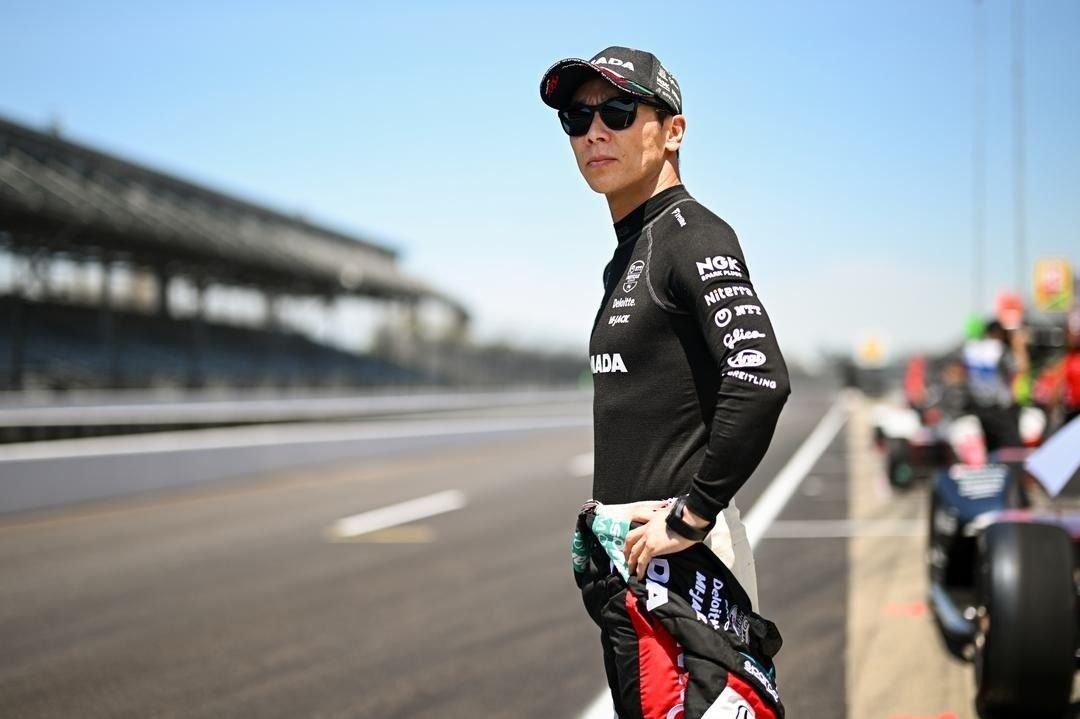The atmosphere in Indianapolis is nearly ideal for running race cars at the iconic Indianapolis Motor Speedway. However, as the first practice session approached its conclusion, the session was interrupted twice due to accidents. The first incident involved Kyle Larson, who crashed his #17 Arrow McLaren-Hendrick Honda into the wall. Shortly after the track was cleared from Larson’s mishap, Takuma Sato found himself in a similar situation, hitting the wall just moments later.
With the green flag signifying the resumption of track activity, Sato was behind the wheel of his #75 Rahal Letterman Lanigan (RLL) Honda. Video replays indicated that as Sato exited Turn 1, he unexpectedly lost control of his car, resulting in a sideways collision with the wall before reaching Turn 2. Fortunately, Sato managed to exit the vehicle with assistance from the AMR team and was later seen at the infield medical center for evaluation. In a conversation with the IndyCar broadcast team, Sato mentioned that while he was experiencing some discomfort, he felt generally well, stating, “It’s tough. My body feels fine. I believe I’ll be back to 100% in about a week.”
Reflecting on the incident, Sato expressed that he needed to discuss the circumstances with his team. He speculated that he may have miscalculated his speed entering Turn 1, leading to the loss of control. The cleanup following Sato’s crash took longer than anticipated due to the extensive debris and fluids on the track, which delayed the continuation of practice.
Sato, a two-time Indianapolis 500 champion, is making a special appearance for the RLL team during the 109th Indianapolis 500 this year. His impressive career spans 15 seasons in the IndyCar series, with 12 of those years spent as a full-time competitor. Today marks the second day of the initial practice sessions for IndyCar drivers vying for a spot in this prestigious race. The previous day’s sessions faced delays due to technical difficulties; however, drivers successfully completed their Rookie Orientation Program (ROP) and Veteran refresher tests, in addition to logging some valuable practice laps during an extended session. The morning’s practice included IndyCar’s “boost” session, allowing teams to utilize engine boost, providing the extra power they will have during the qualifying rounds and the race itself.
As the Indianapolis 500 approaches, the excitement and anticipation are palpable among teams and drivers alike. The rigorous practice sessions serve as crucial preparation for the challenges that lie ahead. Drivers use this time to refine their skills, optimize their vehicles, and develop strategies that will serve them well during the race.
The Indianapolis Motor Speedway, known for its rich history and thrilling atmosphere, is the perfect backdrop for this high-octane event. Each year, fans flock to witness the spectacle of the Indy 500, which has become a hallmark of American motorsport. The combination of speed, strategy, and teamwork makes this race one of the most prestigious in the world.
The practice sessions not only allow drivers to familiarize themselves with the track layout and conditions but also provide an opportunity to gauge their competitors’ performance. As the teams work tirelessly to perfect their setups, they face the ever-present challenge of navigating the unpredictability of racing. Incidents like the ones involving Larson and Sato serve as a reminder of the risks inherent in motorsport, where split-second decisions can have significant consequences.
The focus now shifts to the remaining practice sessions and qualifying rounds, where drivers will aim to secure their positions on the starting grid. The intense competition in the IndyCar series means every lap counts, and drivers must be at the top of their game to achieve success. As they push their limits, teamwork and communication become essential components of their strategy.
Amidst the hustle and bustle, the camaraderie among drivers and teams is evident. Many competitors have formed friendships over the years, sharing a mutual respect for the skills and dedication required to compete at this level. The unique atmosphere of the Indianapolis 500 fosters both competition and camaraderie, making it a special event for everyone involved.
As the days progress, fans can expect to see more thrilling action as drivers continue to hone their skills and adapt to the ever-changing conditions of the track. With the anticipation building, the excitement surrounding the Indianapolis 500 is at an all-time high. Each team is eager to showcase their capabilities and make their mark in this legendary race, with the ultimate goal of taking home the coveted Borg-Warner Trophy.
In preparation for the big day, teams will analyze data collected during practice sessions to fine-tune their strategies. Engineers and crew members work diligently to ensure that every aspect of the car is optimized for peak performance. As the drivers prepare to take on one of the most challenging tracks in motorsport, they know that preparation and adaptability are key factors in achieving success.
The Indianapolis 500 is more than just a race; it is a celebration of speed, skill, and the spirit of competition. As drivers gear up for the challenges ahead, the excitement of the race day looms on the horizon. Fans around the world are eager to witness the spectacle unfold, as the best in the business compete for glory on the historic track.
In conclusion, the Indianapolis Motor Speedway serves as the stage for thrilling practice sessions that set the tone for the upcoming race. With incidents like those of Larson and Sato reminding everyone of the potential dangers, the focus remains on preparation, teamwork, and strategy. As the drivers continue to push their limits, the anticipation for the Indianapolis 500 builds, promising an unforgettable experience for all involved. The convergence of talent, technology, and determination will undoubtedly make for an exhilarating race day.
